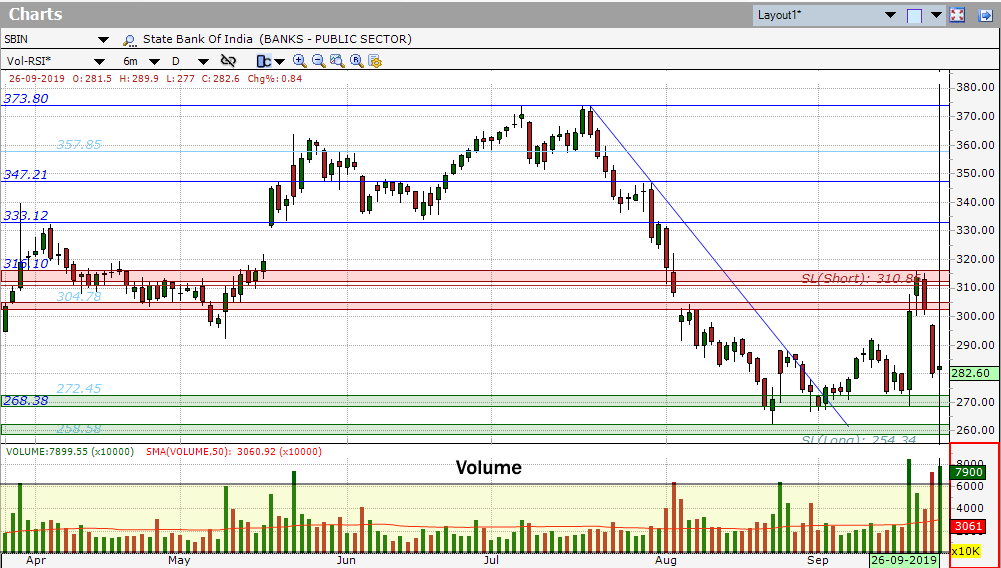Being a Technical Analyst, one has to understand the importance of trading volume. Volume plays a very integral role in Technical Analysis as it helps us to confirm trends and patterns.
Consider volumes as means to gain insights into how other participants perceive the market. Volume is among the most basic and effective concepts to understand when trading stocks. The more active the share, higher would be its volume.
Difference between Volume Traded and Volume Delivery
In this blog, we will discuss what is Volume Traded and Volume Delivery and will also take a look at their differences.
Volume Traded
Volume Traded for a script is the total quantity of shares traded for a specified scrip in a particular trading day.
It includes the total number of shares transacted between a buyer and seller during a transaction. When shares are more actively traded, their trade volume is high, and when shares are less actively traded, their trade volume is low.
Example
Suppose a Trader-A buys 500 shares of SBI Bank, Trader-B buys 1000 shares of SBI Bank and Trader-C sells 1500 share of SBI Bank to a trader other than A and B traders above, in a period of one hour. Then, total traded volume for that stock in that one hour is 3000 shares. Simply put, Volume traded is the sum of all completed trades.
Volume Delivery
Delivery volume is the volume of the stock delivered to the actual buyer out of the total traded volume. This is the actual percentage of total trading volume that results in transfer of shares from one account to another’s.
Example
Suppose Trader A sells 100 shares and Trader B buys those 100 shares and sells it to Trader C and Trader C after buying those shares, keeps them with him as a delivery.
So, here in total, although the traded volume is 200 shares (100 shares from A to C ideally, 100 share done in intraday), but the dDeliverable quantity is only 100 shares, and hence that is called the Volume Delivery.
In Investar, you can plot the Volume (Delivery) as well as Volume (Delivery) % as an indicator as follows:

How to interpret deliverable volume
Bullish: Increase in deliverable % with high volume and price increase
Bearish: Decrease in deliverable % with a price decline
Delivery volume in itself doesn’t tell us much. It is when we combine this parameter along with price is when the market picture becomes more clear to us. Delivery volume is a very effective tool for carrying out thorough analysis of a stock especially for long-term investors.
Volume Traded vs Volume Delivery
A rise in deliverable volume with falling stock price indicates bearishness on the stock on that particular day.
Trading volume on a counter on any given day comprises a significant share of intraday trades and deliverable trades.
In case of the former, shares do not move from one Demat account to another as they these trades get squared off within the session, whereas in the case of the later, shares shift from one account to another.
Volume traded = Intraday traded shares + Delivered shares.
or in other words
Delivery Volume = Total Volume – Intraday Volume
To summarize, the main difference between traded volume and delivery volume is that traded volume is the total number of shares traded in a day and delivery volume is the total volume minus the intraday volume.
most informative post
Glad you enjoyed it.
Very clear explanation in very simple way !!! That’s the ART, I should say !!!
“Volume Traded Vs. Volume Delivery” now seems more clear !!!
Thanks a Lot !!!
Glad you enjoyed it.